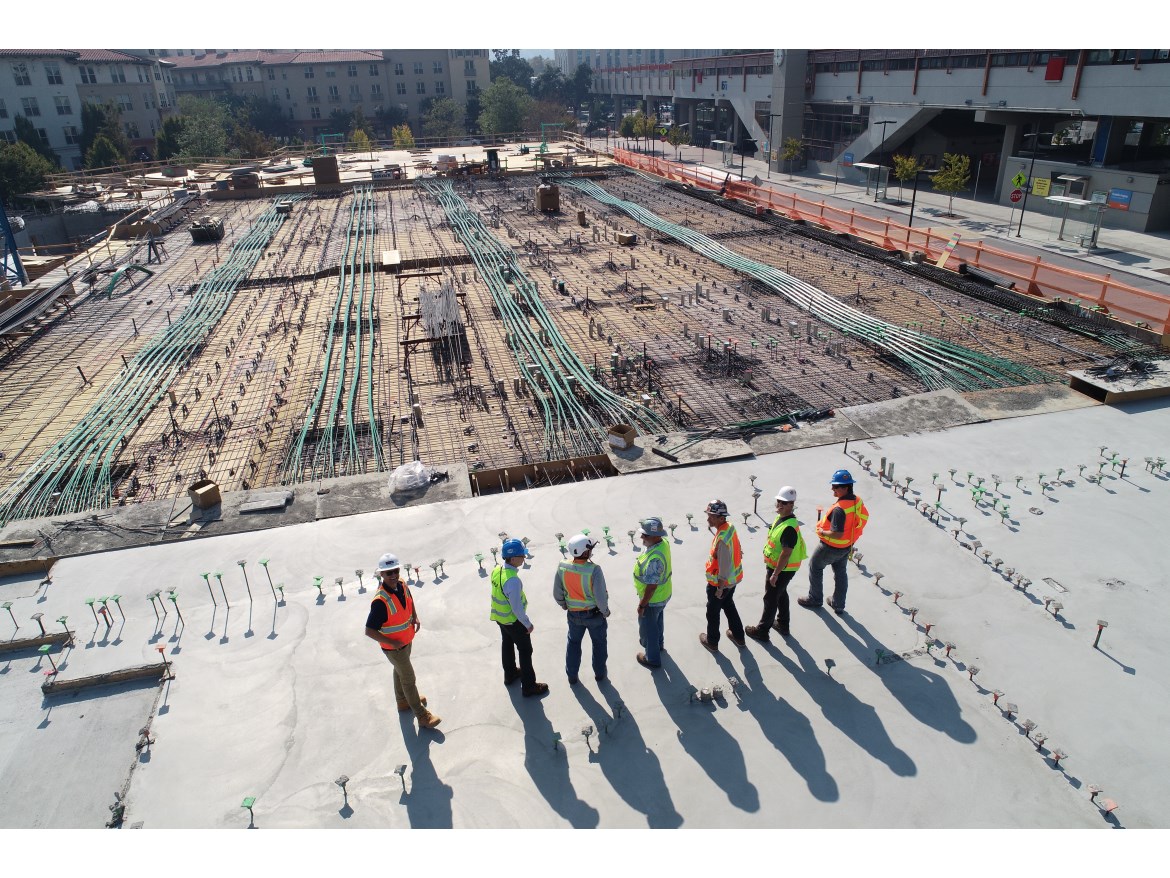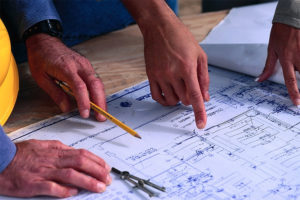Three Benefits Of Commercial Waterproofing
Photo courtesy of Unsplash; Scott Blake.
Re-post of original article from BuildingEnclosureOnline.com
Waterproofing is essential for many commercial buildings. Those in particularly wet or humid areas will especially benefit from it, but every structure — no matter where it is in the country — should be waterproofed.
Here are the key benefits of waterproofing and why businesses need to invest in it.
1. Commercial Waterproofing Strengthens the Building’s Envelope
The primary advantage of waterproofing is that it helps protect the structure. In the past, many large buildings were constructed with thick masonry walls that supported the facility and protected its interior from being penetrated by water. The stone used in the walls was also mostly resistant to moisture.
Modern structures don’t have the same exterior bulk protecting the inside. Some high-rise buildings may have walls as thin as an eighth of an inch, according to Michael T. Kubal, the author of the Construction Waterproofing Handbook.
These walls may not help much in protecting and weatherproofing the building envelope. Modern structures need to be waterproofed to last more than a few years. Regular maintenance of building envelopes and seals will help ensure it lasts even longer.
The most effective waterproofing products will defend against the structural threats that water and water vapor can pose. Modern waterproofing products, like the breathable “house wraps” often used to protect wood-frame light commercial construction, can provide exterior surfaces with extremely high levels of waterproofing. That can be up to 98% in the case of silane-, silicone- or siloxane-based sealer.
Despite the importance of waterproofing, dampness and inadequate waterproofing are common problems for commercial structures. Data from an EPA survey of 100 office building owners found that 85% had past water damage, while 45% had current leaks.
Water damage and leaks were most prevalent in occupied parts of the building, meaning that workers and guests were directly affected by the issues. Damp air can harm air quality — mold and mildew may trigger allergies or potentially cause illness.
Initial waterproofing and regular maintenance can help make a commercial building much more comfortable for employees or guests and help extend its life span. It also helps prevent the expensive water damage already present in many facilities around the country.
2. Commercial Waterproofing Reduces Maintenance Costs
By strengthening a building’s weatherproof envelope, a business owner can significantly reduce maintenance costs. Water damage can easily make a structure much more expensive to maintain.
Wooden structures can benefit especially from waterproofing. Water damage in wood can easily lead to termite infestations, causing additional damage. Over time, this can cause serious issues with exterior and interior structures.
Water damage restoration projects can also be extraordinarily expensive. That means investing in innovative composite materials could create additional costs down the line if they don’t have the right protection.
In addition to protecting against water, coverings may also protect against UV radiation and typical wear and tear.
External horizontal surfaces that see a great deal of foot or vehicle traffic — like parking decks, balconies and plazas — can be worn down over time. Waterproof coatings will provide these surfaces with a little extra protection, preserving their look and function for longer.
In some cases, waterproofing may also help lower a building’s insurance costs. If an owner can demonstrate they’re taking proactive steps to reduce the risk of future damage, they may be able to find a better deal on insurance.
Waterproofing exterior features can also help prevent issues like the shorting of external cabling. If a building owner needs to run a wire through an outer wall, they should always protect the wire using a conduit or similar protective barrier.
Many outdoor electrical conduits are waterproof, meaning they will protect the wire from the elements and potential water damage. The line will also provide some protection against UV damage, corrosion, EMI and force. Wires with a conduit are much harder to accidentally ruin if accidentally tugged, pulled or caught on another object.
Protecting these cables can help ensure uptime for building systems and reduce the risk of repairing or replacing important wiring.
3. Commercial Waterproofing Preserves a Building’s Look
Waterproofing a building’s exterior can also have a significant positive impact on its aesthetic qualities. Rain and other water sources can take a serious toll on its appearance in more ways than one.
Water alone can be enough to damage untreated surfaces. Paint may bubble without the right protection. Over time, plaster can soften, metal can corrode and even durable materials — like stone, tile and cement — can disintegrate.
The after-effects of rain can also create serious problems for untreated exterior walls. Leeching and mold or mildew staining, both caused by water damage, can discolor a building’s exterior.
If water penetrates a building’s exterior, it can also lead to cracks or warping in this facade. This discoloration or damage can make it less attractive, which may dampen employee morale and make businesses located inside seem less professional.
This discoloration can be covered up by painting or washing the structure, but it may return if the underlying problem isn’t treated.
Waterproofing helps keep a building looking new by preventing this damage. Because most waterproof coating and membranes are also UV-resistant, the process will prevent bleaching and lightening of external surfaces that can be caused by exposure to the sun.
Effective waterproofing will also mean less spending on building maintenance that may otherwise be needed to preserve a building’s looks — like repainting, replacement of facades and powerwashing of the exterior.
How Commercial Waterproofing Protects a Building
A commercial building isn’t complete without effective waterproofing. When it’s in place, the owner can protect their structure from water damage, reduce maintenance costs and ensure it remains aesthetically pleasing. It more than pays for itself in the long run.
Waterproofing can also help protect valuable building components like wiring or cabling. Without it, the structure may be vulnerable to leaks, termites, UV damage and other threats. Investing in the waterproofing process early on ensures the property will remain resistant to the elements and be a healthy place for people to work.





